
Introduction: Salesforce Optimization in Broad Strokes
Salesforce stands out as a leading CRM solution, well-known for its ability to transform business operations. However, simply implementing Salesforce isn’t enough to harness its full potential. To truly maximize the benefits of this powerful platform, optimization is key.
When we talk about Salesforce Optimization, we mean using a variety of strategies and techniques to get the most out of your Salesforce platform. This can include improving the speed and performance of your system, automating repetitive tasks, streamlining workflows, and ensuring data is well-organized for better decision-making. The goal is to help your team work more efficiently and improve overall business operations.
- Salesforce Optimization Types
- Performance Optimization
- Process Automation Optimization in Salesforce
- User Experience (UX) Optimization
- Data Optimization
- Integration Optimization
- Security Optimization
- Salesforce License Optimization
- Reporting and Analytics Optimization
- Industry-Specific Optimization Strategies
- Common Challenges in Salesforce Optimization
- Salesforce Apps That May Be Useful
- FAQs about Salesforce Optimization
- What is Salesforce Optimization?
- Why is User Experience (UX) Optimization important in Salesforce?
- How does Performance Optimization benefit my Salesforce org?
- What strategies can be used for continuous Salesforce Optimization?
- How can industry-specific Optimization strategies enhance Salesforce performance?
- In Conclusion
It’s important to remember that optimization isn’t the same for every organization. What works for one company may not work for another. Factors like your industry, the size of your team, the complexity of your processes, and your specific goals all play a role in determining how Salesforce should be optimized. Whether it’s setting up custom dashboards, automating manual tasks, or fine-tuning your data management, the key is to tailor the optimization to match your unique business needs and objectives.
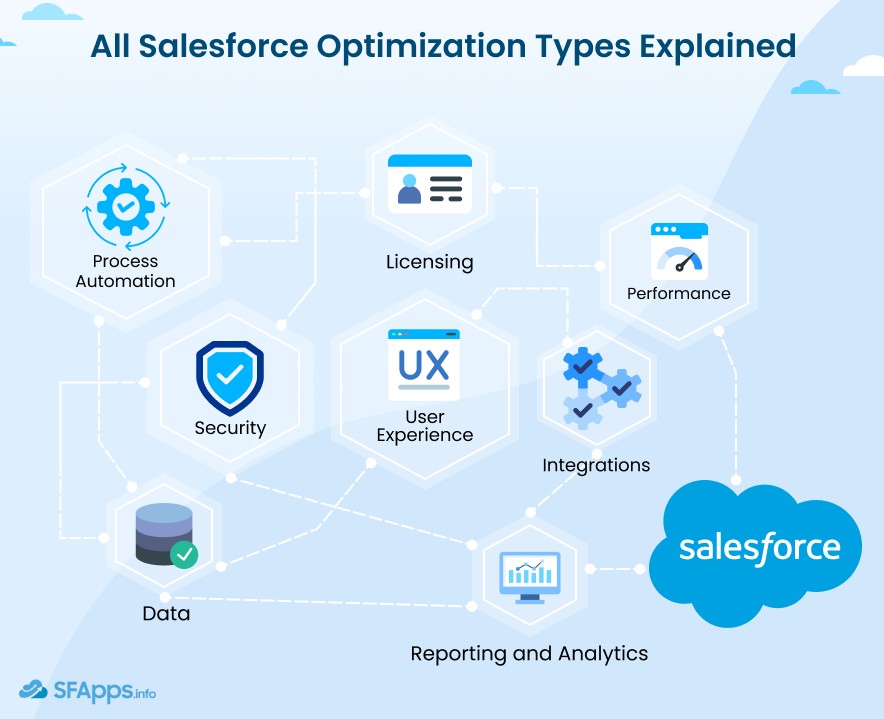
Salesforce Optimization Types
The scope of Salesforce Optimization is broad, covering several crucial areas:
- Performance: Ensuring your Salesforce instance runs smoothly and quickly.
- Process Automation: Streamlining workflows to reduce manual tasks and boost productivity.
- User Experience (UX): Enhancing the interface to improve adoption and satisfaction.
- Data: Maintaining data accuracy and optimizing storage.
- Integrations: Seamlessly connecting Salesforce with other business systems.
- Security: Protecting your Salesforce instance from threats and ensuring compliance.
- Licensing: Optimizing license allocation and usage to reduce costs and ensure efficient resource utilization.
- Reporting and Analytics: Improving data visualization and decision-making capabilities.
Focusing on these areas, businesses can achieve significant improvements in their Salesforce CRM Optimization. This can lead to increased productivity, better data accuracy, improved user satisfaction, and overall cost savings.
As your organization grows and changes, your Salesforce setup should do the same. Optimization isn’t something you do just once; it’s an ongoing process that requires regular reviews and adjustments to keep everything running smoothly.
The time and resources you put into Salesforce Optimization can pay off in big ways. It can improve system performance, make business processes more efficient, and even save on costs. By aligning your Salesforce setup with your business goals, you ensure you’re getting the most value out of this powerful tool.
In simple terms, Salesforce Optimization is about making full use of what the platform can do. It’s about building a system that meets your needs today but can also adapt to future changes. While it might seem like a big task at first, the long-term gains in efficiency, productivity, and cost savings make it a smart move for any business using Salesforce.
So let’s roll up our sleeves and dive into the details.
Performance Optimization
Salesforce Performance Optimization is a critical aspect of maintaining an efficient CRM system. It focuses on improving load times, query execution, and overall responsiveness, which directly impacts user experience and productivity.
Key Techniques for Performance Optimization
- Database indexing and SOQL best practices: Proper indexing allows for faster data retrieval, especially when dealing with large datasets. Implementing SOQL best practices, such as using selective filters, can greatly improve query performance.
- Page layout Optimization: Streamlining page layouts by removing unnecessary fields and components can reduce load times and improve user navigation. This not only speeds up the interface but also simplifies the user experience.
- Lightning Performance Optimization: For organizations using Lightning Experience, the Lightning Performance Analyzer is an invaluable tool. It helps identify issues with page load times and component rendering, allowing for targeted improvements.
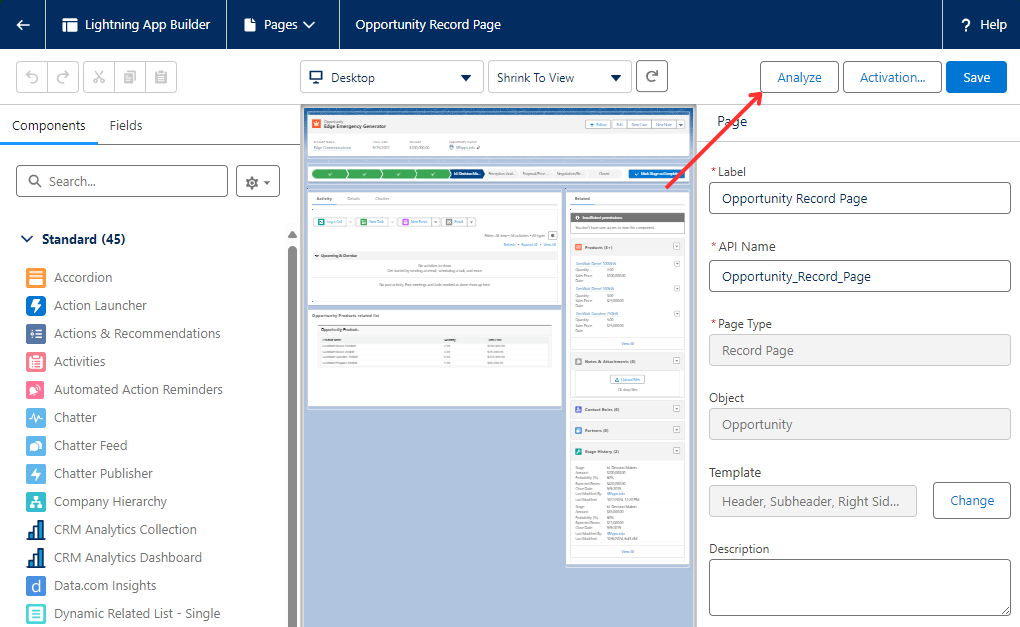
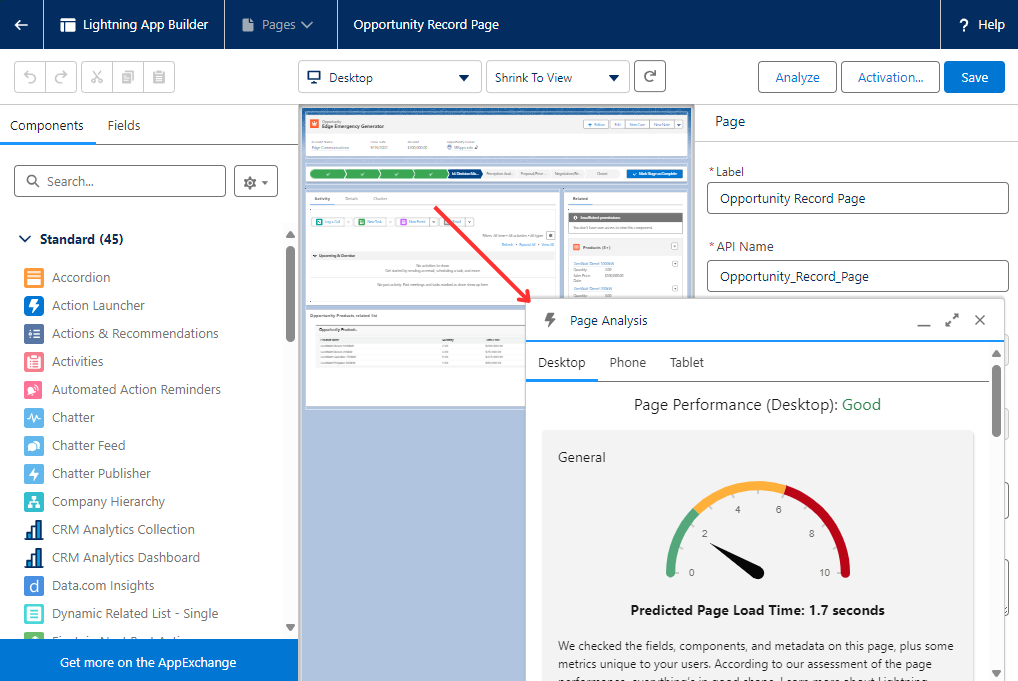
To monitor performance, the Salesforce Optimizer is an essential tool. It provides insights into areas that need attention and offers recommendations for improvements. Regular execution and analyzing results of this Salesforce Optimization report can help maintain optimal system performance.
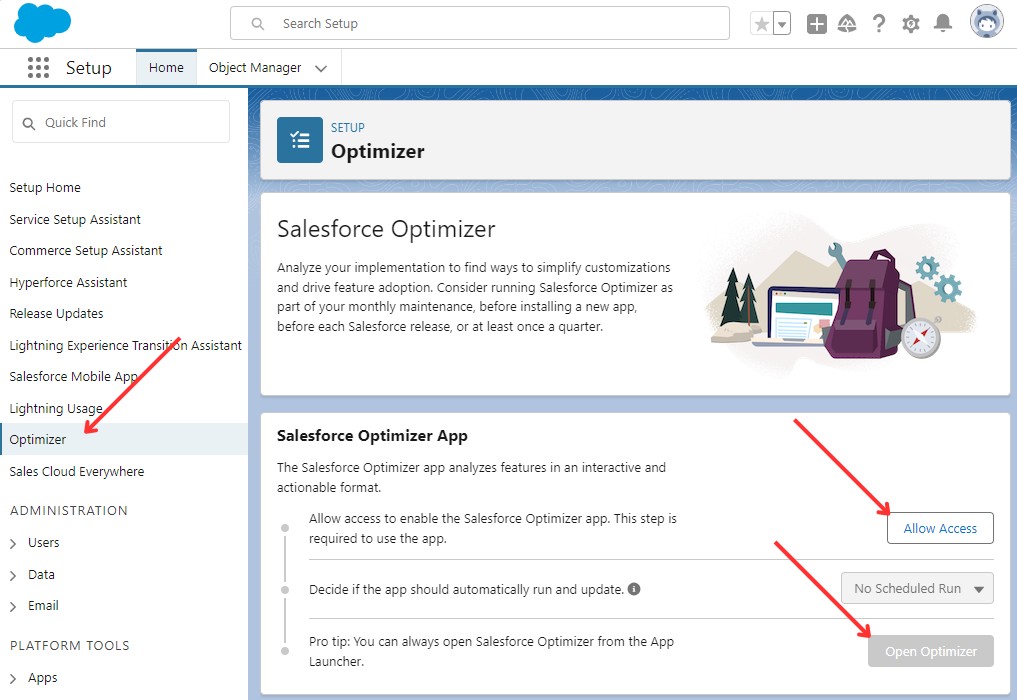
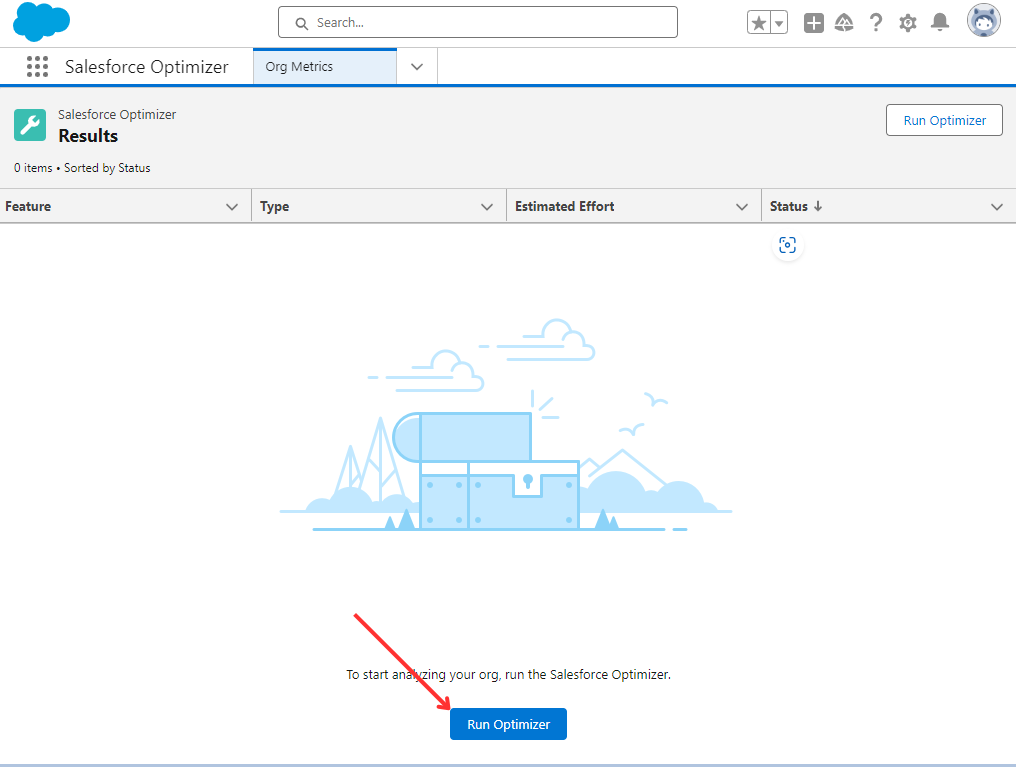
It’s important to understand that performance Optimization is a continuous, multifaceted process. Various elements, including Salesforce network Optimization, depend on multiple interconnected factors. As your business grows and data volume expands, maintaining peak performance requires ongoing monitoring and regular system adjustments.
Process Automation Optimization in Salesforce
Optimizing process automation in Salesforce is crucial for enhancing operational efficiency and reducing manual workload. By implementing effective automation strategies, organizations can achieve significant cost savings and streamline their Salesforce ecosystem.
Key Techniques for Process Automation Optimization
- Salesforce Flow Optimization: These tools are fundamental for automating business processes in Salesforce. Properly designed flows and processes can significantly improve efficiency. However, it’s important to choose the right tool for each task to avoid performance issues. Well-optimized automations ensure smooth operations without causing system slowdowns.
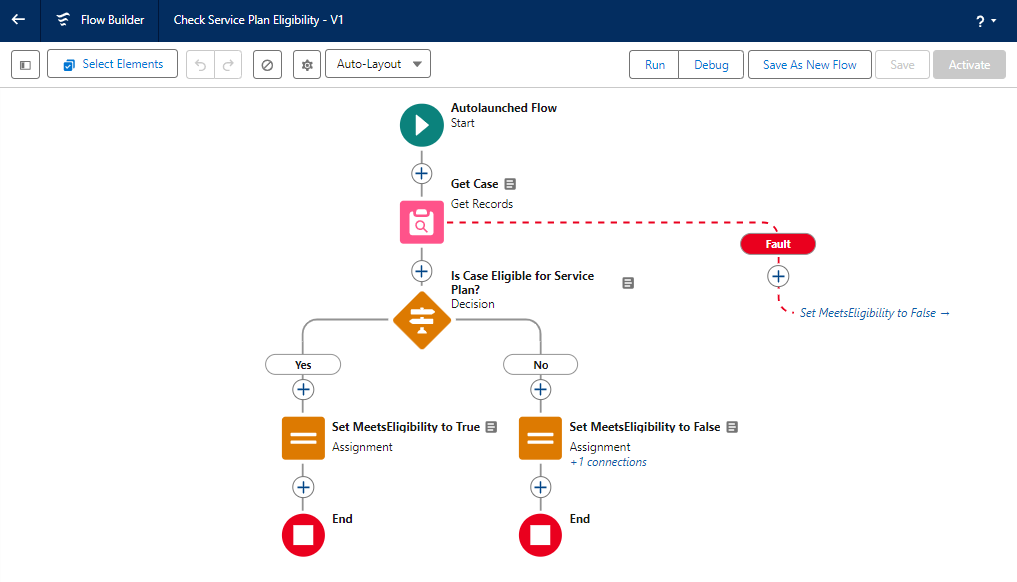
- Automate Repetitive Tasks with Apex Triggers: Apex triggers enable you to automate tasks based on specific events within Salesforce. Write efficient code by avoiding SOQL queries inside loops and bulkifying triggers to enhance Salesforce Performance Optimization. Periodically review and update triggers to align with evolving business processes.
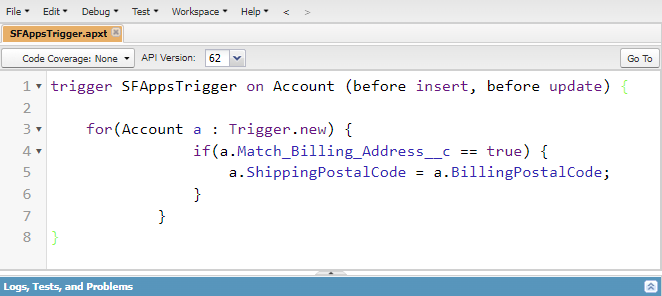
- Salesforce Business Process Optimization: Optimizing business processes involves refining Flows to align with business objectives. Document existing processes to identify bottlenecks and inefficiencies. Use Salesforce reports and dashboards to gain insights into process performance. Implement small, incremental changes to test and measure impact.
For tracking the execution of automated processes Debug Logs are an essential tool. They help identify inefficiencies and areas for improvement in your automation setup.
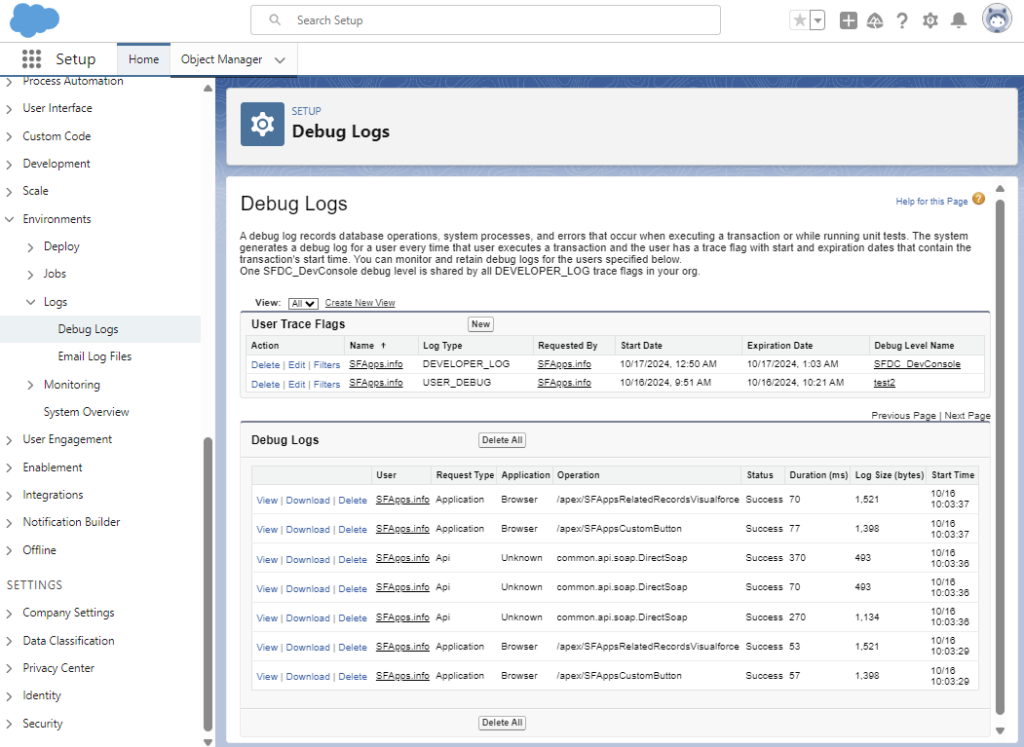
Remember, the goal is to implement automation that aligns with your business objectives while maintaining system performance and scalability. Regular monitoring and refinement of these processes are essential for long-term success in Salesforce automation Optimization.
User Experience (UX) Optimization
User experience (UX) is crucial for ensuring Salesforce users can efficiently and effectively perform their tasks. A well-optimized UX ensures that users can efficiently navigate the system, access relevant information, and complete tasks quickly. By streamlining the user interface, businesses not only improve daily workflows but also contribute to long-term Salesforce org Optimization, where the system is better aligned with business needs and goals.
Key Techniques for UX Optimization
- Customizing Page Layouts and Lightning Pages: Customizing Page Layouts and Lightning Pages, as well as custom Visualforce page, helps in displaying relevant information, according to user roles and needs, reducing the time spent searching for data. Utilize Salesforce Lightning App Builder to create custom Lightning Pages (Home Page, Record Page, Application Page), which can provide intuitive interfaces and streamline workflows.
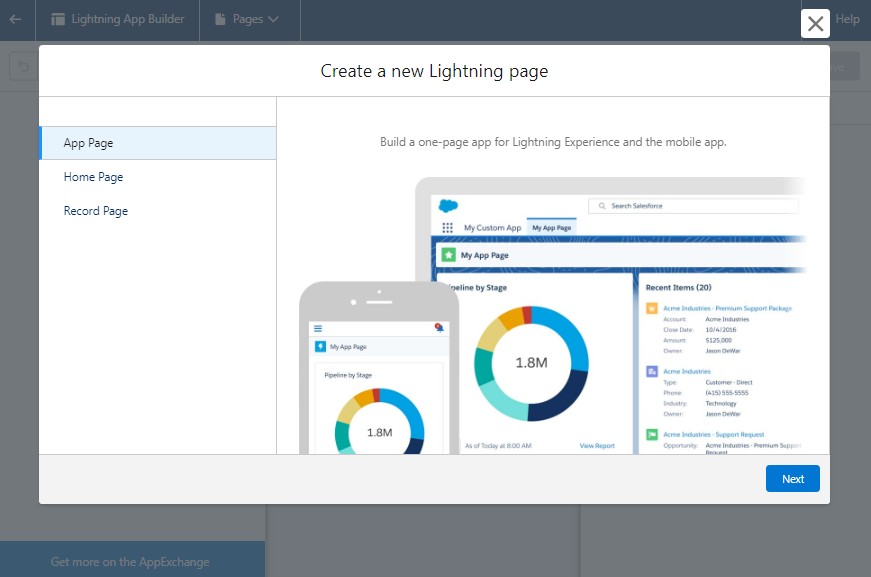
For example, customizing homepages ensures that users see relevant reports, dashboards, tasks, and shortcuts as soon as they log in. This also supports Salesforce account role Optimization, where users are provided with the exact tools and insights necessary for their role, improving efficiency and focus.
- Creating Role-Specific Apps: Businesses can significantly enhance the user experience by creating role-specific Apps. This level of customization contributes to Salesforce business process Optimization by aligning the interface with specific workflows, ensuring that users can complete tasks more quickly and with fewer clicks.
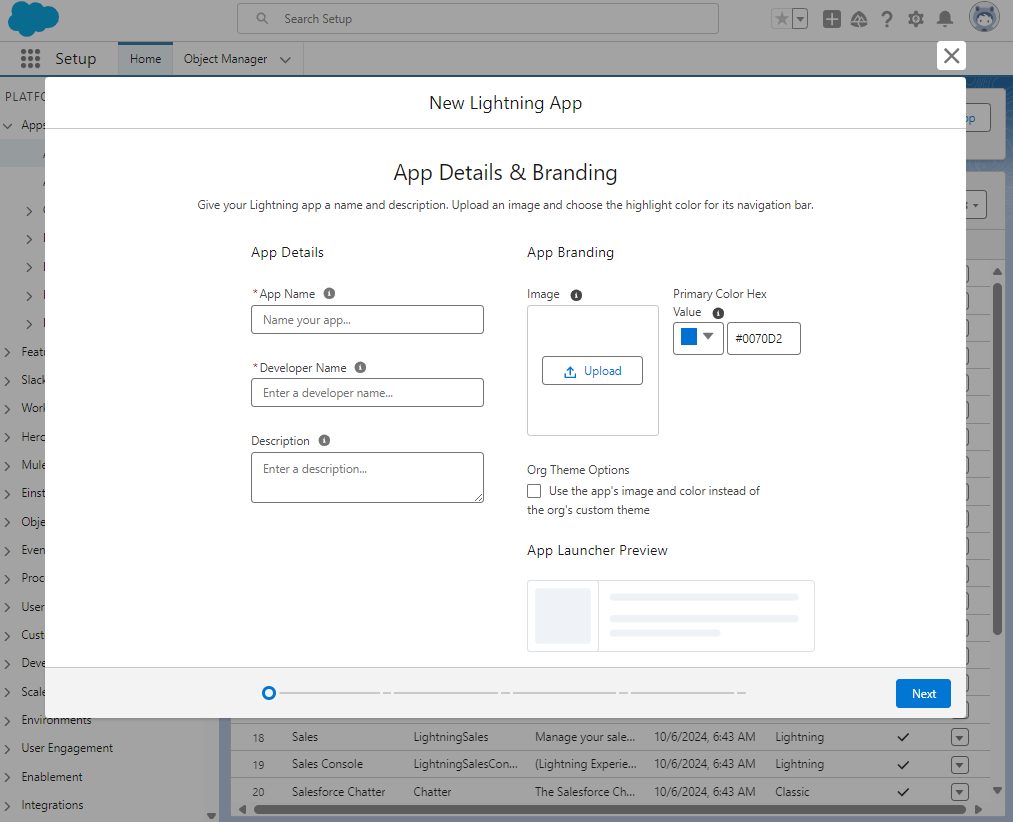
- Enhancing Mobile Usability: With more users accessing Salesforce on mobile devices, enhancing mobile usability is essential. Leverage Salesforce Mobile App to ensure a seamless experience across different devices. Optimize navigation, simplify interfaces, and ensure critical functions are easily accessible. Testing on various devices and screen sizes guarantees that the mobile experience is user-friendly and efficient.
By creating mobile-specific layouts and simplifying navigation, businesses can ensure that field workers have fast, reliable access to the data they need. Salesforce field service Optimization benefits greatly from a well-optimized mobile experience, as it allows service technicians and sales teams to perform their tasks efficiently on the go, without being bogged down by a clunky interface or slow load times.
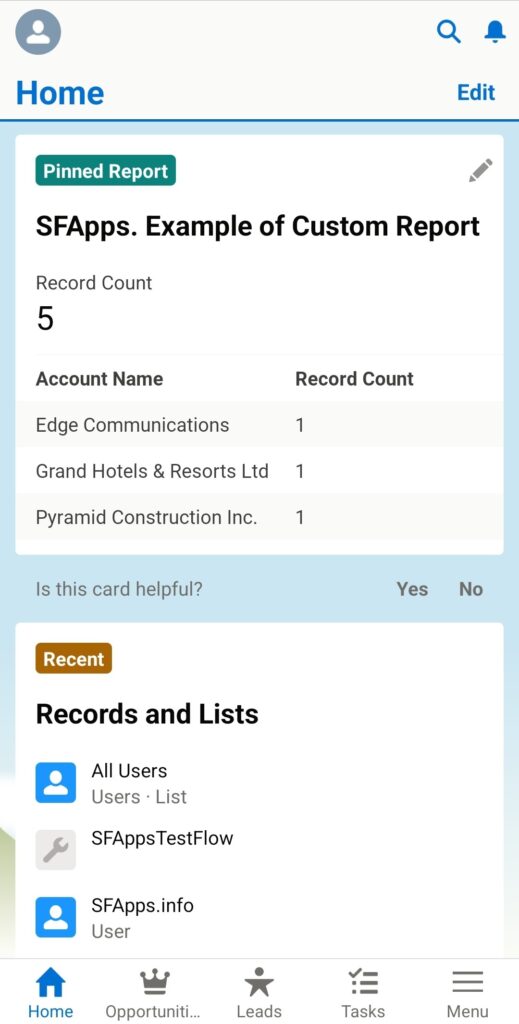
Data Optimization
Data Optimization in Salesforce is vital for ensuring system efficiency, data integrity, and regulatory compliance. It involves strategies for data archiving, cleansing, validation, and efficient data model design.
As businesses grow, data accumulates quickly, and without effective Salesforce Data Optimization strategies, organizations can face performance issues, storage limits, and inaccurate reporting. Proper data management enhances system performance and contributes to overall Salesforce cost savings and Optimization.
Key Techniques for Data Optimization
- Data Archiving & Retention Strategies: Implementing effective data archiving and retention strategies helps in avoiding storage limits by archiving outdated or unnecessary data, thus keeping your active data set clean and manageable. These strategies also ensure that critical data is retained and easily retrievable when needed.
- Data Cleansing and Deduplication: Using Salesforce Optimization services or third-party tools to ensure data cleanliness is crucial. Data cleansing involves correcting or removing inaccurate data, while deduplication helps in eliminating redundant data entries. This results in accurate and reliable data, which enhances overall performance and decision-making processes.
- Data Validation Rules & Lookup Relationships: Data validation rules and lookup relationships play a significant role in maintaining data quality and system integrity. Validation rules ensure that the data entered meets specific criteria, reducing the chance of errors. Lookup relationships help in establishing connections between different objects within Salesforce, thereby optimizing data organization and accessibility.
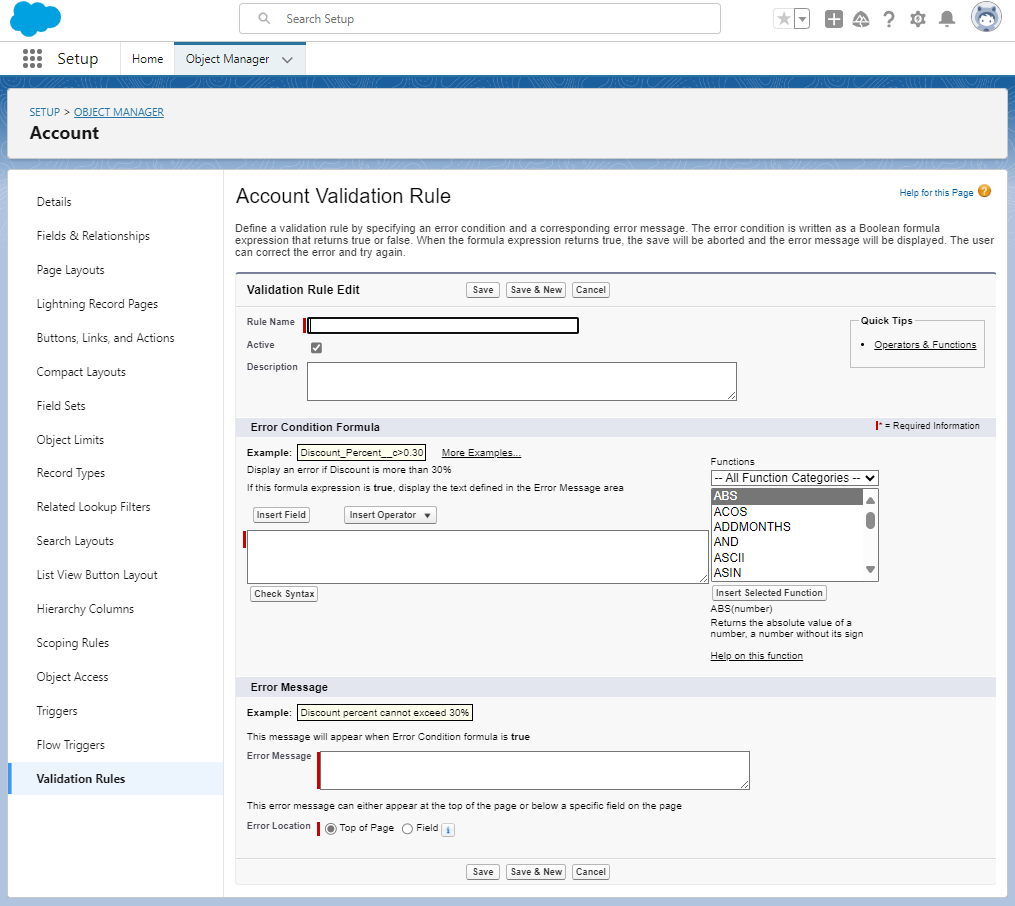
Integration Optimization
Integration Optimization is crucial for ensuring seamless connectivity between Salesforce and other business systems. By optimizing these integrations, you can enhance system performance, ensure efficient data exchange, and maintain overall Salesforce performance. Effective integration strategies contribute to a more cohesive and streamlined business process.
Key Techniques for Integration Optimization
- Connecting Salesforce with Other Applications and Services: Seamlessly connecting Salesforce with other applications and services allows for smooth data flow across different platforms. Leveraging middleware and integration platforms like MuleSoft can facilitate this by enabling network Optimization and efficient data exchange. They also offer tools for monitoring and managing integration processes, helping to maintain a high level of performance. By integrating Salesforce with key business systems, you can ensure that all your data remains synchronized and up-to-date.
- API Management and Optimization: Managing API calls efficiently is essential to avoid performance bottlenecks. Implementing best practices for API limits and Optimization ensures that your integrations do not negatively impact system performance. This includes monitoring API usage, optimizing the frequency of API calls, and using asynchronous processes where possible.
- Batch Data Processing: Choosing the right data processing method is key to successful integration. While real-time processing is beneficial for time-sensitive tasks, Batch processing can handle large volumes of data more efficiently. Optimizing these processes ensures that data is processed in the most efficient manner.
By implementing these techniques and utilizing the right tools for Optimization Salesforce integrations, you can achieve improved performance, efficient data exchange, and a more streamlined business process.
Insight:
Best Practices for Continuous Optimization:
Regular Reviews and Audits: Conduct regular reviews and audits to keep your Salesforce org optimized. Routine health checks help identify and fix performance issues, security gaps, and data inconsistencies.
Training and Certification: Invest in ongoing training and certification for your team. Keeping skills updated with the latest features and best practices ensures optimal system use and continuous improvement.
Cost Savings and Optimization: Focus on cost-effective strategies to enhance performance and achieve significant cost savings. Efficient data management and streamlined processes maximize your Salesforce investment.
Involve Professionals: Utilizing professional Admin services can significantly enhance the implementation of Optimization strategies. Hire Salesforce Administrator from an external consulting company, bring specialized knowledge and experience, ensuring that Optimization processes are executed effectively and efficiently, ultimately driving better results and freeing up internal resources.
Adopt these practices for a continuously optimized Salesforce org, driving efficiency and supporting business growth.
Security Optimization
Security Optimization is essential for protecting sensitive information within Salesforce, ensuring compliance, and particularly supporting industries like healthcare that require strict data protection. Proper security measures help in minimizing risks and maintaining the integrity of the system.
Key Techniques for Security Optimization
- Enhancing Data Security and User Authentication: Implementing robust data security and user authentication mechanisms is crucial. Best practices involve setting up user profiles, permission sets, and role hierarchies to ensure appropriate access levels. This minimizes risks by granting users only the access they need to perform their tasks effectively. Multi-factor authentication (MFA) and single sign-on (SSO) can further enhance security by adding an extra layer of protection.
- Implementing Field-Level Security and Sharing Rules: Field-level security and Sharing Rules are vital for safeguarding sensitive data. Leveraging these settings ensures that only authorized users can view or edit specific fields. In healthcare Optimization, for instance, encrypting sensitive patient data and setting strict field-level security measures are critical. Sharing rules help in controlling data access based on criteria such as roles or record ownership, maintaining data privacy and compliance.
- Regular Security Audits and Compliance Checks: Conducting regular security audits and compliance checks is necessary to detect vulnerabilities and optimize security settings. The Salesforce Security Health Check tool can be used to evaluate and improve the security posture of your Salesforce instance. Regular audits help in identifying and mitigating potential risks, ensuring continuous compliance with industry standards and regulations.
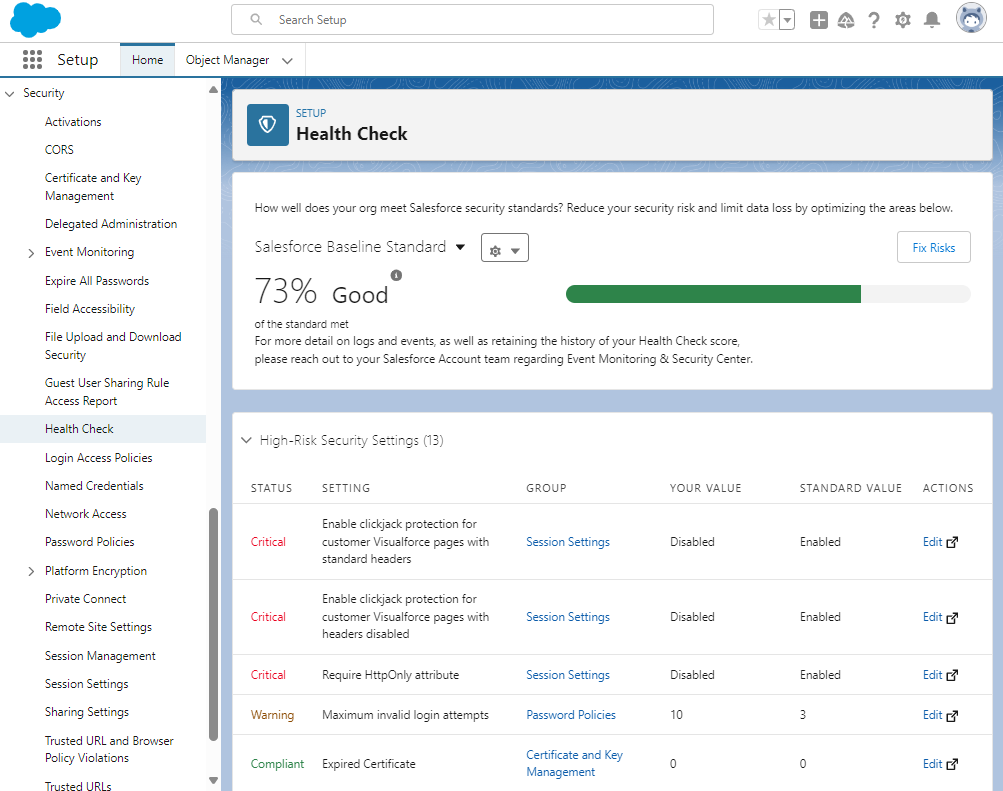
Salesforce License Optimization
Optimizing your Salesforce licenses is crucial to ensure that you’re getting the most value out of your investment. Effective license management helps in reducing costs, maximizing functionality, and ensuring that each user has the appropriate level of access for their role.
Key Techniques for License Optimization
- Assessing User Needs: Start by evaluating the needs of your users. Identify which features and functionalities each role requires and match them with the appropriate license type.
- Regular Audits: Conduct regular audits to review the usage of your current licenses. Check if there are any inactive users or licenses that can be downgraded based on actual usage.
- Optimizing License Types: Salesforce offers various license types. Ensure you’re using the most cost-effective license for each user.
- Leveraging Sandbox Environments: Use sandbox environments for development and testing to avoid consuming valuable production licenses.
- Training and User Adoption: Invest in training to ensure that users are fully utilizing the features available to them. Well-trained users can make the most out of their licenses, reducing the need for additional licenses or upgrades.
- Negotiating with Salesforce: Work with your Salesforce account executive to negotiate the best deals for your licenses. Often, bundling services or committing to longer-term contracts can result in discounts and better rates.
By implementing these strategies, businesses can optimize their Salesforce licenses, ensuring cost-effectiveness and optimal utilization of the platform’s capabilities.
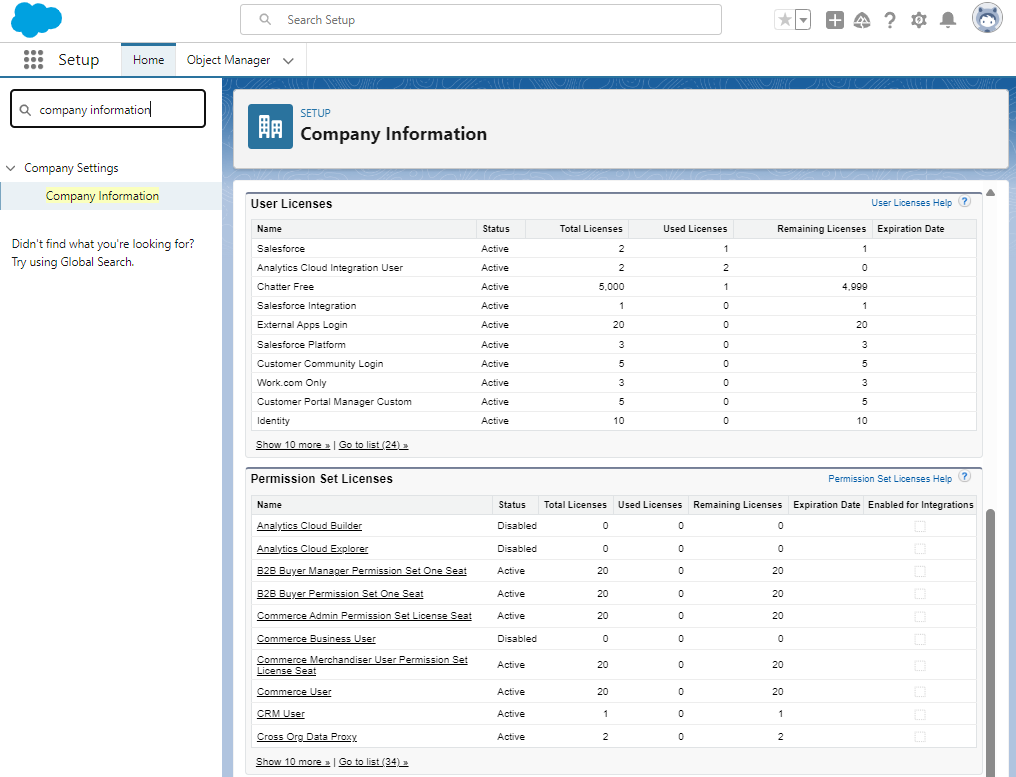
Reporting and Analytics Optimization
Salesforce Optimization for reporting and analytics is crucial to ensure that users can swiftly derive actionable insights. By creating effective custom reports Salesforce capabilities allow teams to extract precisely the data they need when they need it. Well-optimized reporting and analytics not only aid in making informed decisions but also enhance overall Salesforce performance, ultimately driving business growth.
Key Techniques for Reporting and Analytics Optimization
- Report Type Optimization: Efficiently selecting and designing report types is essential to avoid clutter and enhance Salesforce CRM Optimization. Choosing the appropriate report type helps in organizing data effectively and presenting it in a clear, concise manner.
- Cross-Object Reporting and Filtering: The use of cross-object reporting and filtering greatly improves reporting efficiency, contributing to Salesforce performance Optimization. By leveraging filters, users can drill down into specific data sets and focus on relevant information. Cross-object reporting allows for the combination of data from multiple objects, providing a comprehensive view of business metrics.
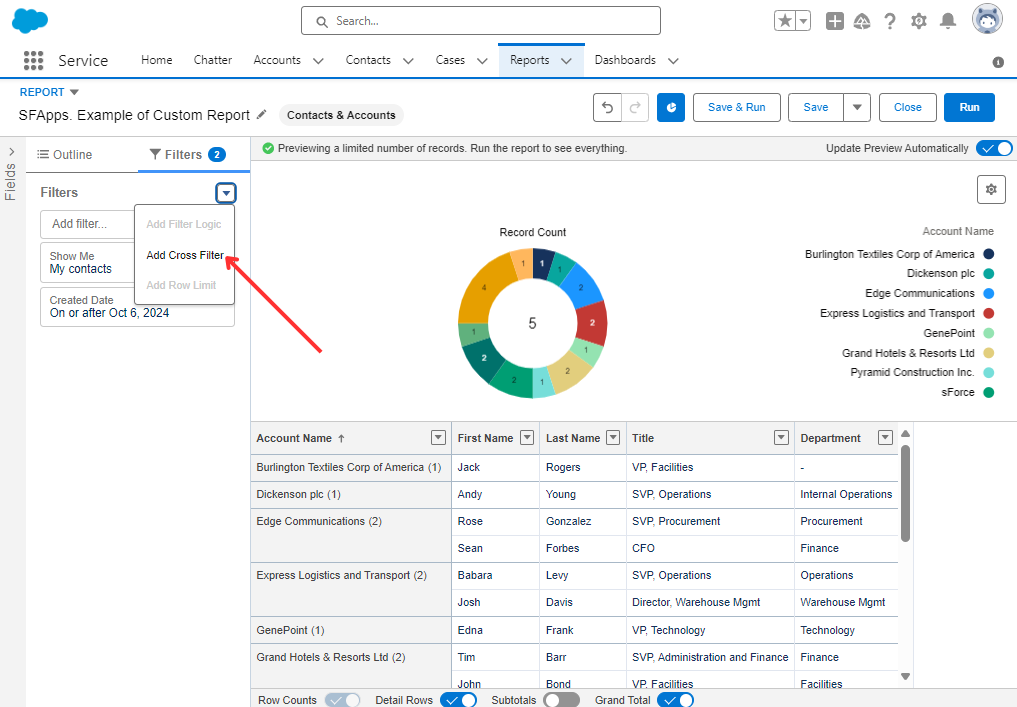
- Dashboard Optimization: Streamlining dashboards for faster performance and more relevant insights is key to enhancing overall Salesforce org Optimization. Designing custom Salesforce dashboard with these best practices and focusing on critical metrics and avoiding unnecessary data can significantly improve loading times and user experience. Utilizing visual elements like charts can make data interpretation more intuitive. Regularly reviewing and updating dashboards ensures that they remain aligned with current business objectives and user requirements.
Industry-Specific Optimization Strategies
Salesforce offers a variety of Optimization strategies that can be tailored to specific industries that have unique requirements for Salesforce Optimization. For instance, in the financial sector, Salesforce can be optimized to manage client relationships and compliance. In retail, it can be customized to handle inventory management, customer interactions, and sales processes. Tailoring Salesforce to fit industry-specific needs involves configuring custom objects, workflows, and automation to streamline operations.
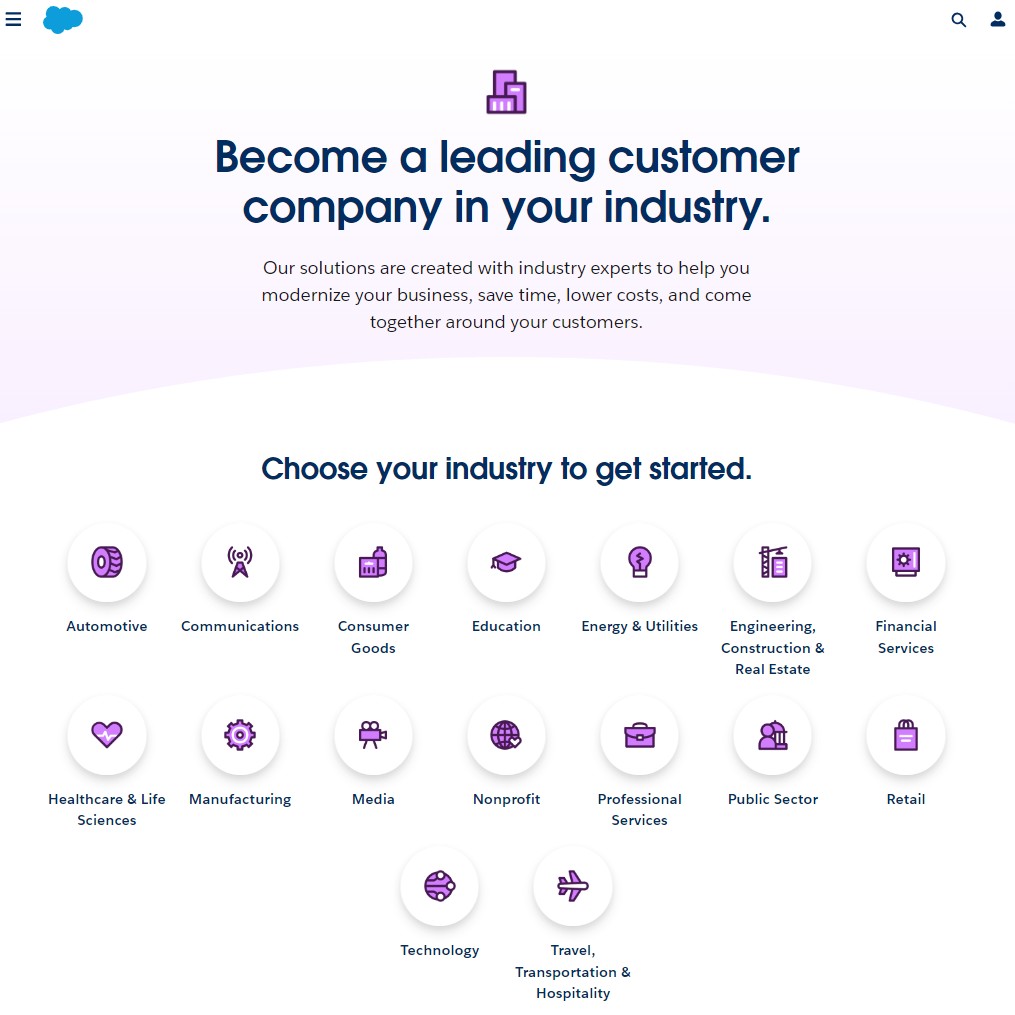
1. Salesforce Healthcare Optimization
In the healthcare industry, optimizing Salesforce involves ensuring data security, patient data management, and compliance with regulations. Techniques include implementing field-level security to safeguard patient information, using validation rules for data accuracy, and optimizing processes for patient scheduling and case management. This also may include implementing Salesforce Health Cloud, which provides a comprehensive view of patient data, or using Salesforce Shield for enhanced security measures.
2. Salesforce CPQ Optimization
Salesforce CPQ (Configure, Price, Quote) is a powerful tool for streamlining sales processes. Optimization of Salesforce CPQ processes focuses on streamlining sales operations by automating the configuration, pricing, and quoting processes. This includes setting up complex product rules, pricing structures, and approval processes to ensure accuracy and efficiency in sales.
3. Salesforce Field Service and Schedule Optimization
For businesses managing field operations, such as utilities, telecom, or service providers Salesforce Field Service Optimization is key. This includes scheduling and dispatching field technicians efficiently, tracking work orders, managing inventory in real-time, and route planning to ensure field technicians can perform their jobs efficiently. Salesforce schedule Optimization tools allow businesses to automate and enhance the scheduling process, ensuring that the right technician is assigned to the right job at the right time. In particular, it is worth considering Salesforce Enhanced Scheduling and Optimization. Additionally, Salesforce route Optimization ensures that field workers take the most efficient routes, reducing travel time and improving overall service delivery. These efforts are further supported by resource schedule Optimization Salesforce solutions, which leads to better resource management.
4. Journey Optimization Salesforce
Businesses can enhance customer journeys through send time Optimization Salesforce capabilities and using tools like Marketing Cloud. This involves creating personalized customer experiences, automating communication, and using data to predict customer needs. For example, Salesforce Einstein send time Optimization help ensure that marketing messages are delivered at the most effective times, increasing engagement and conversion rates. By integrating Salesforce send time Optimization into your marketing strategy, you can maximize customer engagement while reducing resource expenditure.
Common Challenges in Salesforce Optimization
Optimizing Salesforce can come with a variety of challenges:
1. Data Quality Issues
Inaccurate or inconsistent data can severely impact the effectiveness of your Optimizations.
Solution: It’s crucial to implement robust data cleansing processes and regularly audit data for accuracy.
2. Complex Integrations
Integrating Salesforce with other systems can be complex and may introduce performance bottlenecks.
Solution: Careful planning, testing, and using middleware solutions like MuleSoft can help mitigate these issues.
3. User Adoption Resistance
Employees may resist changes, especially if they’re used to old processes.
Solution: Providing adequate training and highlighting the benefits of the new optimized system can ease the transition.
4. Customization Overload
Over-customization can lead to a cluttered and inefficient system.
Solution: Stick to necessary customizations and always consider the long-term impact on system performance.
5. Keeping Up with Updates
Salesforce regularly releases updates that can impact your customizations and integrations.
Solution: Staying informed about new releases and testing updates in a sandbox environment before deployment is essential.
6. Resource Constraints
Limited time, budget, or skilled personnel can hinder Optimization efforts.
Solution: Leveraging professional Salesforce Admin services can provide the expertise and resources needed to overcome these constraints.
7. Security Concerns
Ensuring data security and compliance with regulations is always a challenge.
Solution: Regular security audits and using tools like Salesforce Shield can help protect your data.
Salesforce Apps That May Be Useful
Sales Process Optimizer
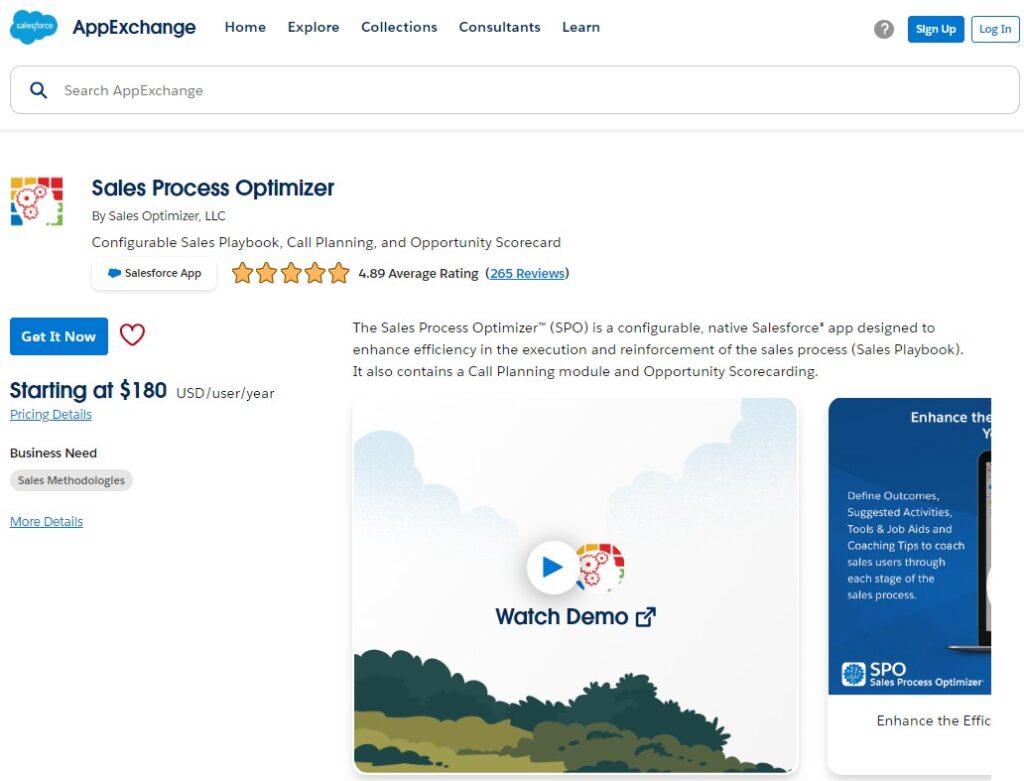
Sales Process Optimizer is a native Salesforce application that streamlines and enhances your sales process execution through configurable playbooks, call planning, and opportunity scorecarding. The app works seamlessly in both Salesforce Classic and Lightning interfaces, offering mobile-friendly access to sales process guidance, customizable call planning templates, and performance tracking tools. SPO helps sales teams maintain consistency in best practices while providing flexible configuration options for different sales processes and deal types.
Pricing: Starting from $180 USD/user/year.
Resource Optimizer
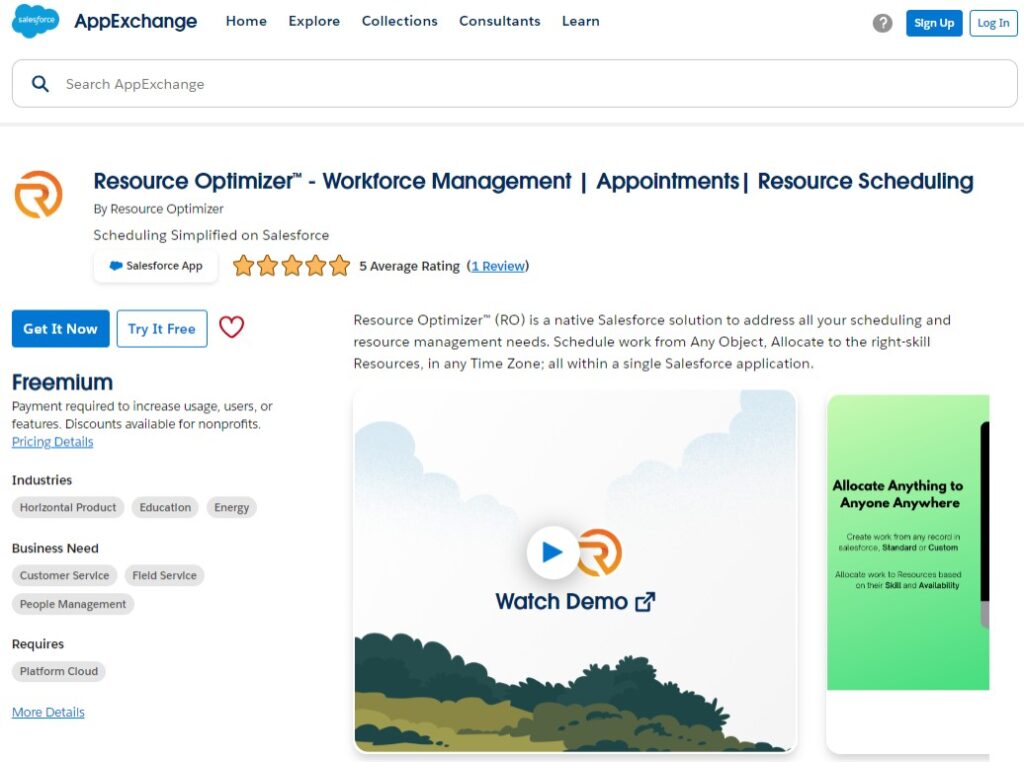
Resource Optimizer is a native Salesforce workforce management solution that simplifies resource scheduling and appointment management across any Salesforce object. The application offers comprehensive features including skill-based resource allocation, multi-timezone scheduling, mobile optimization, and automated resource utilization tracking. With built-in analytics, signature capture, and integration capabilities, Resource Optimizer can helps businesses streamline their workforce operations while maintaining full compatibility with the Salesforce platform.
Pricing: Free for up to 5 Schedulers, and 20 Resources. Additional: Scheduler $25 USD/user/month, Resource $15 USD/user/month, Community User $5 USD/user/month. Discounts are available for nonprofits.
Metazoa Snapshot
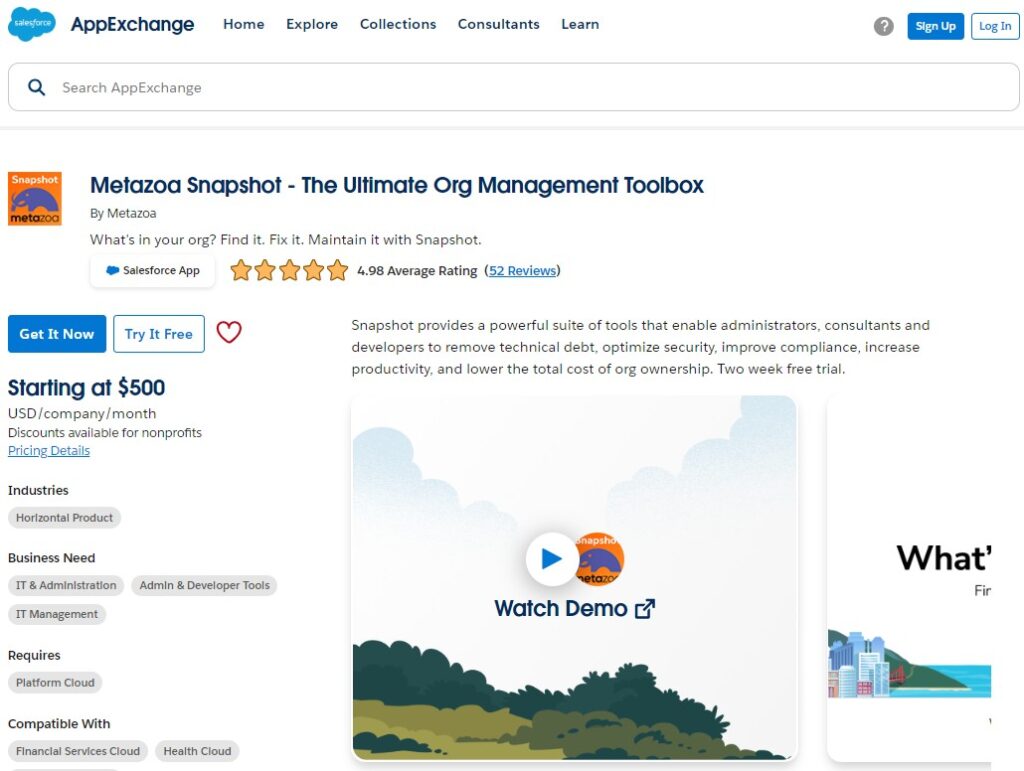
Metazoa Snapshot is an advanced Salesforce org management solution that streamlines administrator, consultant, and developer workflows. This comprehensive toolset focuses on technical debt removal, security optimization, and efficient org maintenance. Key features include metadata comparison and migration, profile management, security compliance reporting, AI-powered assistance, and data migration tools. With support for major repositories like GitHub and Salesforce DX integration, Snapshot helps organizations maintain optimal org health while reducing operational costs.
Pricing: $500 USD/company/month, the price starts at $416 per month billed annually. Two week free trial. Discounts are available for nonprofits.
FAQs about Salesforce Optimization
What is Salesforce Optimization?
Salesforce Optimization involves improving various aspects of the Salesforce platform to enhance performance, efficiency, and user experience. This can include optimizing data management, security settings, integrations, reporting, and more.
Why is User Experience (UX) Optimization important in Salesforce?
UX Optimization ensures that users can navigate the platform efficiently and perform their tasks effectively. By customizing page layouts, enhancing mobile usability, and designing user-friendly interfaces, businesses can improve user satisfaction and productivity.
How does Performance Optimization benefit my Salesforce org?
Performance Optimization focuses on improving data load times, system reliability, and scalability. This ensures that your Salesforce instance runs smoothly, handles increased data volumes effectively, and remains reliable during peak usage times.
What strategies can be used for continuous Salesforce Optimization?
Continuous Optimization strategies include regular reviews and audits, ongoing training and certification for your team, and using professional admin services to implement Optimizations effectively. These practices help maintain system performance and efficiency over time.
How can industry-specific Optimization strategies enhance Salesforce performance?
Tailoring Salesforce to meet the unique needs of different industries, such as healthcare or field service management, ensures that the platform supports specific business processes and compliance requirements. This leads to more efficient operations and better overall performance.
In Conclusion
Regular Salesforce Optimization is important for businesses, no matter their size.
In this article, we covered several ways to make Salesforce work better and faster for your business. These strategies include:
- User Experience (UX) Optimization: Making Salesforce easier for your team to use, so they can get tasks done faster.
- Performance Optimization: Tweaking the system to run more efficiently and handle larger workloads smoothly.
- Data Optimization: Organizing and cleaning up your data to ensure accuracy and better decision-making.
- Integration Optimization: Connecting Salesforce with other tools to streamline processes and improve productivity.
- Security Optimization: Strengthening security settings to protect sensitive data and stay compliant with regulations.
- Reporting and Analytics Optimization: Setting up better reports and dashboards to track performance and identify trends.
- Industry-Specific Optimization: Tailoring Salesforce features to meet the unique needs of your particular industry.
By using these strategies, businesses can benefit from reduced costs, faster performance, better compliance with industry rules, higher user satisfaction, and stronger alignment with their long-term business goals.
It’s important to regularly review and adjust your Salesforce setup to keep everything running smoothly and stay ahead of changes in your business needs.

Dorian is a 6X Certified Salesforce Developer and Administrator with a start in the IT world as a CRM Admin in 2020. Since diving into Salesforce in 2021 via Trailhead and Focus on Force, he has achieved a Ranger Rank, earned several Superbadges, and bagged certifications including the Salesforce Certified Administrator, Platform App Builder, Associate and Platform Developer I by 2023. In 2024 he also became Salesforce Certified AI Associate and earned Certified AI Specialist Certification in 2025. Dorian is very keen on continuous learning, always looks for fresh ways to improve his knowledge. He enjoys running, boxing, kickboxing and reading diverse kinds of books in his free time.


 Previous Post
Previous Post Next Post
Next Post